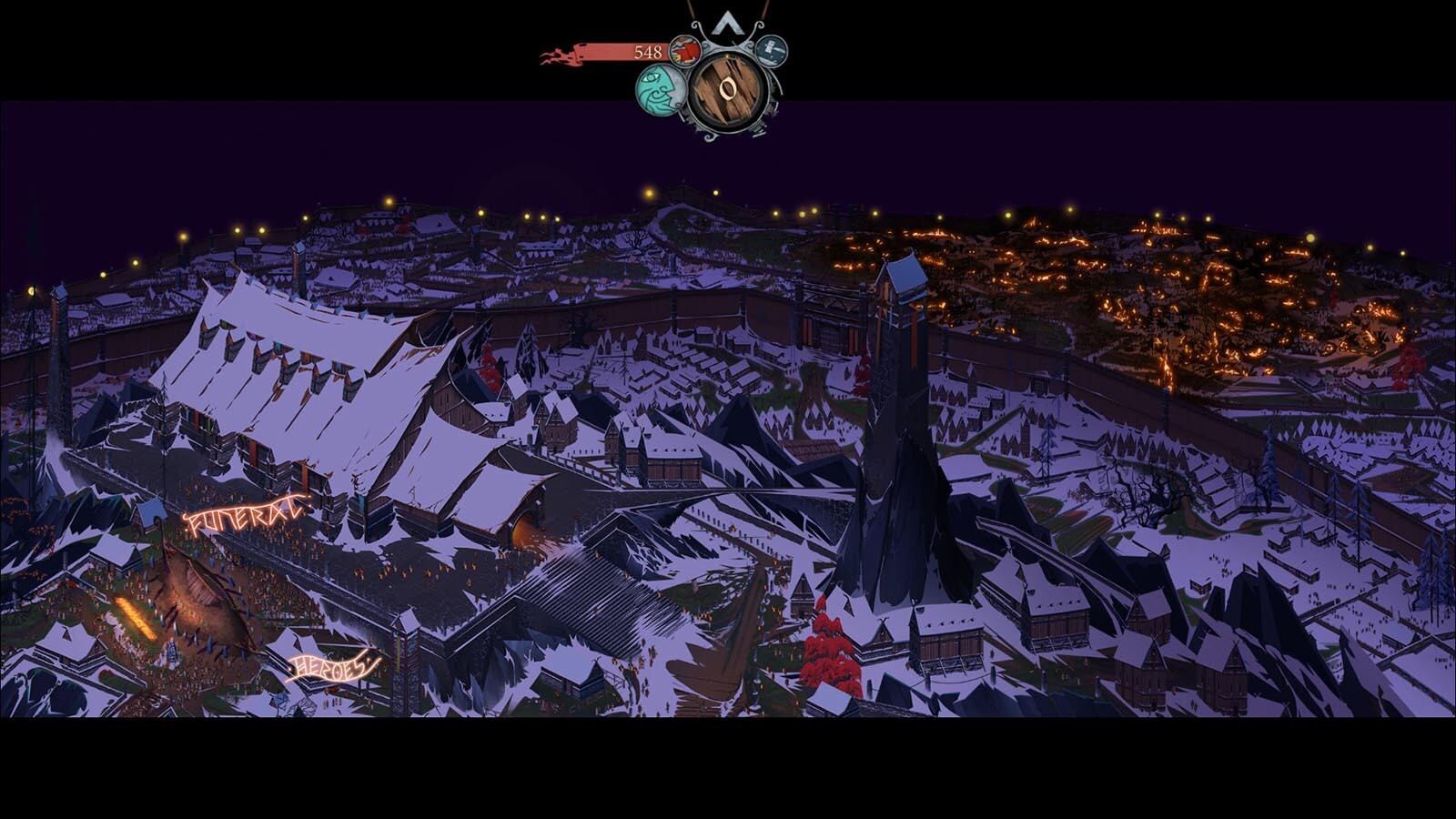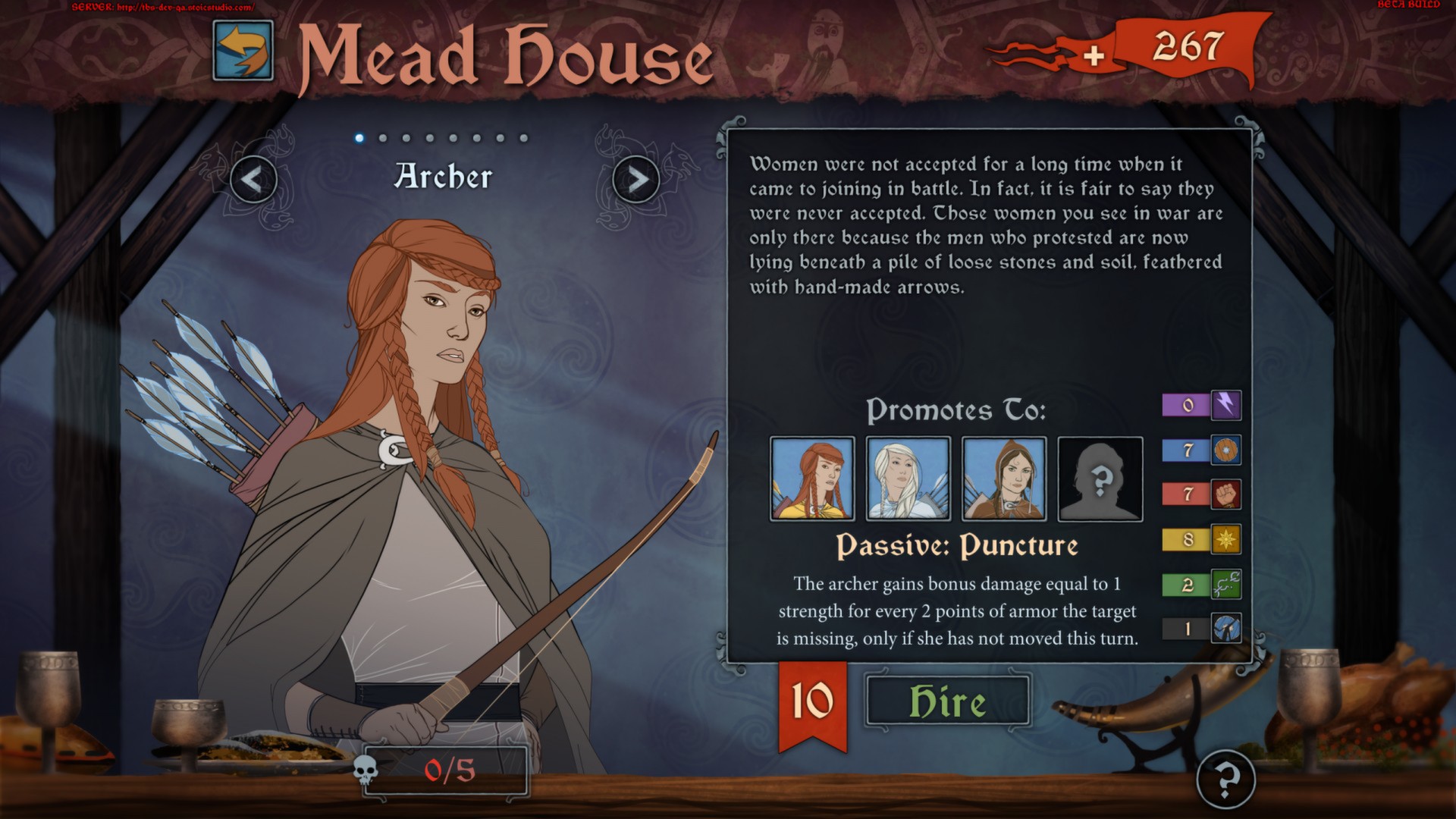

Player-controlled characters need to be aware of two numbers, a blue one that represents armour and a red number representing health. Niggles aside the mechanics of combat can be described thusly: six player-controlled characters, which can be a combination of several classes with different special moves, strengths, and weaknesses, face off against waves of enemies that vary in difficulty depending on narrative context. Sadly, keeping enemies alive but at low health remains an effective combat strategy. Character turn-order is still pre-determined and your opponents' moves can be foreseen, which encourages some negative tactics for perceptive players. Grid overlays show how far a character can move, as before movement is restricted to horizontal and vertical. While combat is exciting, it is also very familiar. Combat begins in the opening scene and is frequent throughout the campaign. It doesn't take long for The Banner Saga 2 to get players fighting. Do you adopt an 'each for their own' or 'cooperation' strategy to survive? Do you try to save each and every individual you encounter or leave the meek and mild to die? As supplies dwindle, which they do persistently, these questions take a greater significance if the people of your caravan are to avoid starvation. Outside of combat and dialogue options, it's managing the caravan that is under your control that proves most challenging. Characterisation really comes to the fore here, while humans are emotional, varls are practical, and many of the difficulties faced come in deciding which of the races your personal opinions align more with. The Banner Saga 2 delights in taking the player on a bumpy journey of murky grey twists and turns. Every choice affects something, there's a feeling of uncertainty because the results of decisions aren't clear until it's too late to change. Suddenly those decisions are anything but obvious. Sometimes the purpose of a scene isn't clear, and early on it can be easy to scoff at seemingly obvious decisions, but Stoic has done a great job of providing each choice with a meaningful outcome. Text and dialogue provides exposition, and players can react how they see fit via the selection of dialogue options. Most of the story is told in visual novel style scenes. Even player movements appear to have been given a bit of attention.

There's more animated scenes that ooze quality too.

Battlefields are much more varied, and destructible debris obstructs player movement. It's great to see that Stoic have enhanced the visuals in minor ways throughout the sequel. Such as in Boersgard, where madness has spread like a virus and even the most trustworthy people can turn vicious at the slightest provocation.

Throughout the game players travel to distinctive locations and encounter numerous colourful characters. The art style looks classic but feels fresh. Visual presentation is the ace in The Banner Saga sleeve. So much so that it can be difficult to see what, if any, changes have been made. The Banner Saga 2 is an absolutely faithful successor.


 0 kommentar(er)
0 kommentar(er)
